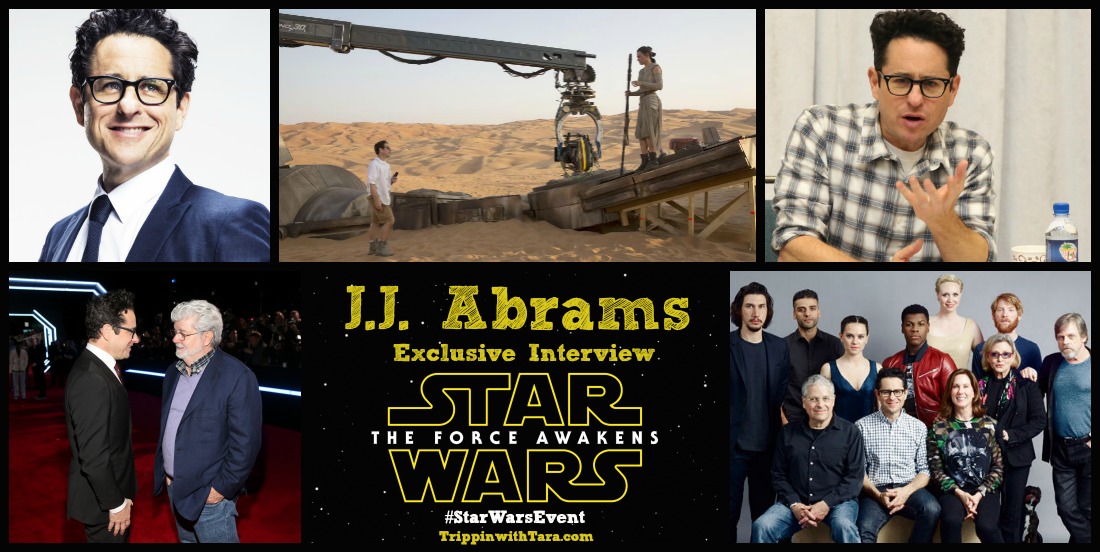
J.J. Abrams
Director, producer, writer, actor, and composer. Unlike the new faces of relatively unknown actors in Star Wars: The Force Awakens, J.J. Abrams’ list of credits is long, being that he wrote and/or produced many feature films such as Regarding Henry, Forever Young, and Armageddon. He is also heavily credited for drama series he created or co-created, including Felicity (co-creator), Alias (creator), Lost (co-creator), and Fringe (co-creator).
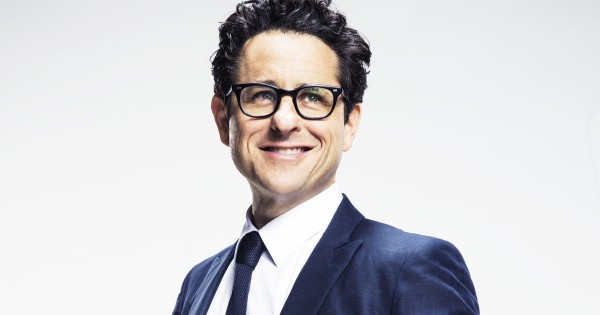
As far as a director, J.J. Abrams directed Star Trek and its sequel Star Trek Into Darkness, Mission: Impossible III and Super 8. Most importantly, he directed and co-wrote Star Wars: The Force Awakens, the kick off film in the Star Wars sequel trilogy. The man is brilliant, and is rounding up a week of incredible interviews and excitement around the release that has long been awaited.
You were just 11 when your love of Star Wars began, did that influence the way that you approach producing this film?
Of course it did because it was something that meant so much to me for so long. The thing is that it’s because it’s been ingrained in sort of all of our conscientiousness for so long that it’s become a birthright to just know Star Wars, you know. You’re sort of born, you know what a light saber is, Darth Vader, you understand that. At three years old, kids talk about Star Wars in a way that is so eerie, ’cause you think how could you possibly know so much. And somehow they do and even those kids who haven’t played the games are seen the shows, I don’t know how it is that they understand Star Wars immediately.
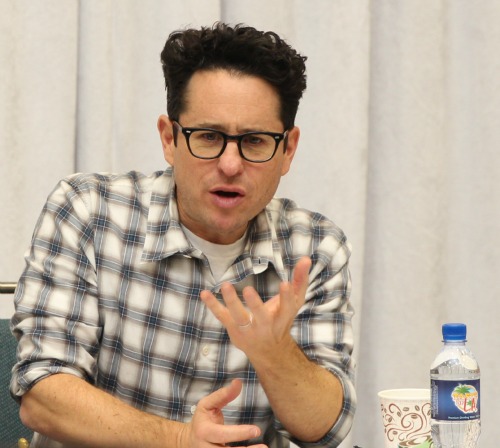
But my job wasn’t to be a fan boy or an 11 year old kid. It was to be a nearly 50 year old movie director, so I tried to approach this thing from a point of view of obviously acknowledging how much I love what George Lucas created, but understand that being a fan doesn’t make the story work. Being a fan doesn’t make the scene any good. Being a fan is great but we all had to be story tellers and filmmakers.
I was surrounded by people like Lawrence Kasdan, who’d written obviously the original Empire Strikes Back and the Return of the Jedi, and actors who had been there from the beginning, all the way through, you know, visual effects and sound too, of course, John Williams who collaborating with him is like cheating, ’cause he’s just, he speaks to our soul with music in a way that I think is super-human. And so the whole process was really about trying to love it but also be hard on it, so that the story meant something and was emotional and not just a fan film.
It was reported that you had collaborated with Lin Manuel Miranda for the music and I was wondering how did that relationship come about?
Our 17 year old son and I went to see Hamilton, which if you haven’t seen it, is one of the great experiences of all time, which cannot be oversold. And you hear crazy hyperbolic language being used about it, and then you go to see it, and it’s better than anyone described it, and gets better as it goes, which is impossible.
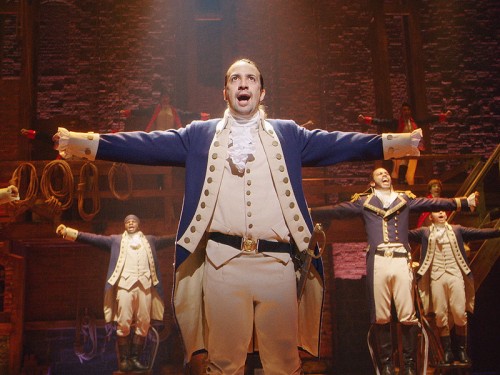
At intermission I was thinking it can’t possibly continue at this level, and it just gets better. And then I was distracted at intermission by a tap on my shoulder and I turned around it was Lin Manuel Miranda, who, normally stars in this thing he wrote the songs for, but this night it was his Understudy. And he said hi. And I was like oh, my God. Do you understand what you’ve done? He’s like yes. I was just essentially fawning over him and he said in this jokey, off-hand way, if you need music for the cantina I’m happy to do it. And it was so weird because a couple weeks earlier, John Williams had said to me he really wanted to focus on the score. There’s a lot of music in the movie.
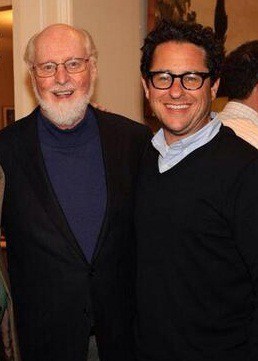
And he said this one scene in the film which is essentially, if we have a version of a kind of cantina scene, if like someone I work with said Star Wars is a Western, there’s a sort of a saloon in every Western, and this was our saloon. And John said, you know, I’d rather not work on this music because I have so much other score to do, and this is really source music. I was like, alright. I thought crap, what are we gonna do and I started working on something as a sort of a hobbyist musician myself. So I was working on a piece of music. Anyway, Miranda says this to me, I can’t believe it. So I email Lynn and I say listen, I know you were joking, but the truth is we sort of have a need for some music in the scene, if you’re serious. And he emails back. He’s like I’ll drop everything. I’m like oh, my God. You’re kidding me. And so we started collaborating on this music and we both use the same music software and we have dropbox and we would send files back and forth. And we came up with this, this piece of music, actually two pieces of music for this sequence, and to get to work with him was was preposterously fun.
I got to hang out with him subsequently and if you haven’t seen his appearance on Jimmy Fallon, it’s one of the greatest things you’ve ever seen because it’s freestyle rap, which is actually, truly, unprepared in any way, and staggering, you know. He is amazing.
Can you tell us about how it all started for Episode 7, as who asked you to be involved and how that felt for you to be asked?
Yeah, it was Kathleen Kennedy, who I’ve known for a long time and she called and asked if I was interested in working on Star Wars. And, of course it was a very surreal question and it was very flattering. And my answer was no, partly because, Katie, my wife and I, had plans to take our kids away. I’d been working on a lot of back-to-back projects for a while, partly because I’d worked on a number of sequels, and it felt like enough is enough, and partly because I care about Star Wars so much that the idea of taking it on felt like a kind of a thing that I couldn’t imagine, and intimidating.
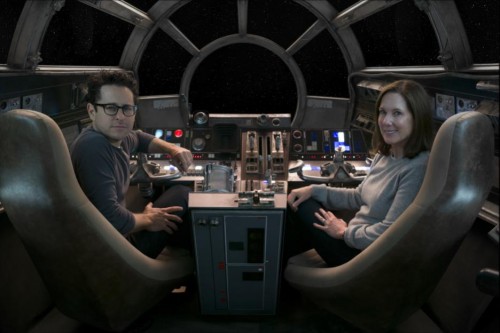
And so I said no thank you, and she said can we get together. I said yes. And when Kathy Kennedy and you get together, she’ll convince you of whatever it is she wants you to do. And she just was amazing and basically said this was going to be an opportunity to continue the story since Return of the Jedi. And as we were talking, I realized this is 30-some years after the fact, the main characters would have been born 10 to 15 years after that movie. They’d, you know, looking back on what we know of the story, that would be ancient history for kids who were 19, 20 years old. What do they know? What do they believe? And what do they believe in? And the idea of finding these young people who exist in a Star Wars universe was so compelling to me, and that feeling of, of re-discovering a world and a feeling that was so powerful for growing up, was undeniable. And after the meeting, I went downstairs and found Katie, my wife, and I just said I think I really want to do this. And she said really. I said yes. And she said, you know, this is definitely a once in a lifetime opportunity. And you really need to consider it, if this is something you want to do. And I did and it wasn’t an easy for us, for our family, for my company, Bad Robot.
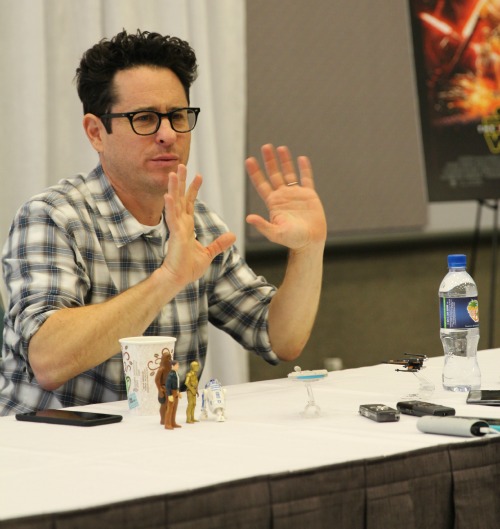
There were a lot of issues that came with it and yet I knew that as challenging as it would be that if we could all get our sea legs and do it right, that it could be an extraordinary situation and, and an amazing experience, and in every category from, prep and figuring out the story and writing the script with Lawrence Kasdan and designing the movie and shooting it and editing it and doing post and scoring it. I mean, literally through the 3D pass, the reviews that we’ve had, and I’m not always the biggest 3D fan, but I will tell you there are things in this movie that I actually felt were shockingly better in 3D, because there are literally shots that I couldn’t believe I saw things in in 3D that I hadn’t seen in 2D. It was so strange and I know this might sound like I’m selling, you know, the 3D, and to anyone who doesn’t really care, see it in 2D. Don’t see it in 3D, you know. It’s okay. I was amazed at how great that looked. Every stage has been as gratifying as it was challenging and it’s all because of the unparalleled and unbelievable work that everyone did at every turn. And I’m very grateful.
I have a question about the characters that are puppets, which is kind of a different thing for nowadays to use actual puppets. Can you talk about your choice in that in this?
Yes. Well, I remember seeing Star Wars and Empire and Jedi, and of course, that was before there was such a thing as a CG character. And the use of puppetry was so brilliant and it reminded me, this is so strange, because when we were shooting the scene that I was referring to, the Mos Eisley Cantina, there were a number of creatures there as well as other sequences, but a lot in that one scene.
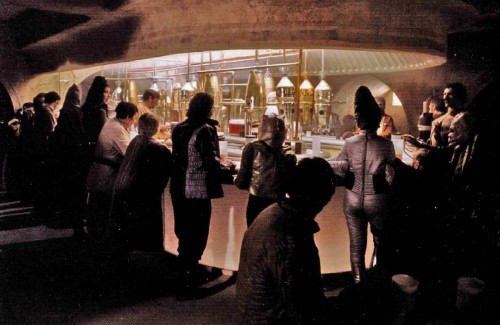
And I remember looking around and there were just puppeteers under every table and poking through things and there were just all these people there were basically invisible but they were performing these characters that Neal and his team created. And I remember feeling like oh, my God. It’s like we’re on the set of a Muppet movie. And it was so cool and I realized, of course, Frank Oz, and this Venn diagram of what Jim Henson and his workshop did, and what George Lucas did, not only to overlap obviously in Yoda, but that there was a kind of creative, home spun, do it yourself genius that was when the Muppets were brought to life, of course, they were playing these sort of often plush, comedic characters.
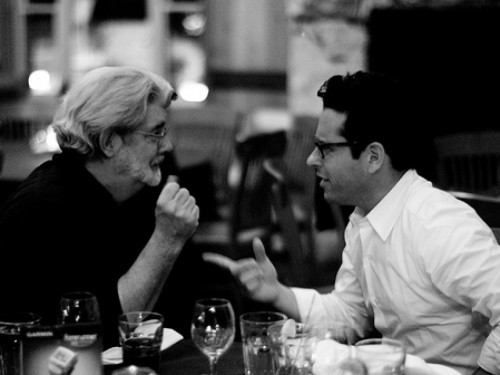
And George Lucas used the same technology to create what appeared to be living, breathing flesh and blood characters. And it was so wonderful to have that, and as the shoot continued, the biggest, advantage was in BB-8, who is our new droid, who in scenes with the other actors, Daisy and John and Harrison, this droid was alive, was expressive, was passionate, curious, helpful, afraid, daring.
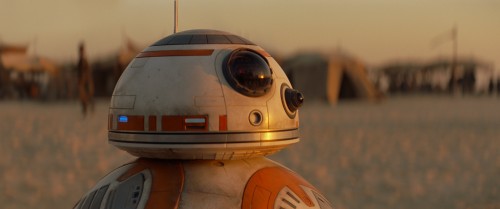
He was literally on camera, in scenes doing everything that you could have ever dreamed of. We could have worked with our extraordinary computer graphics department at ILM and made that work, but it never would have looked quite, quite as good, quite as real, and Daisy (Ridley), who is now starring in her first movie. She is fearless and sweet and vulnerable and tough and a revelation in this movie.
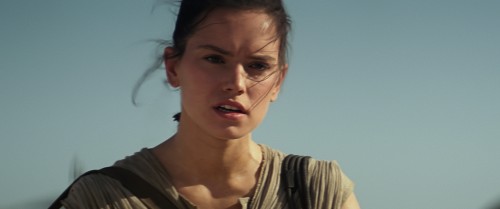
To have her interact with BB-8, performed by Brian and David, Brian always right there next to him, so off and on camera, David with the remote control off camera. We use CG for BB-8 not to bring BB-8 into the shot but to remove the puppeteers. So we, we use CG quite a bit to actually get rid of legs poking out from the bottom of a creature, wires, rigs, arms and stuff like that, but it was really an amazing thing to have all those creatures and BB-8, the most important one, live and present and in the frame and in the shot. So that when there where CG creatures, when there were things that we couldn’t do physically, there was a standard to match, which was actually captured on film.
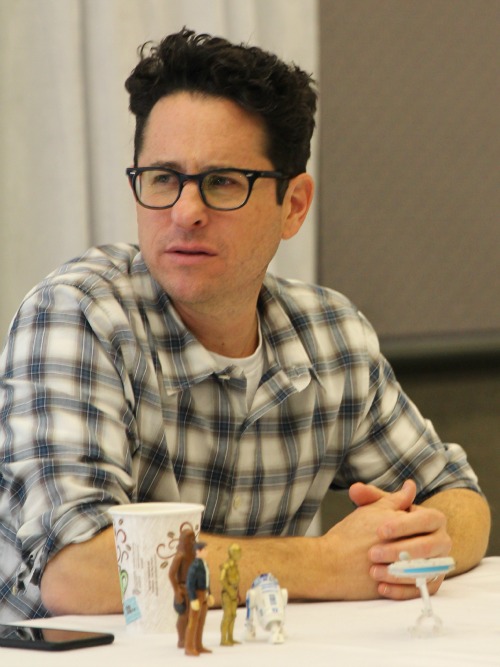
At this time the PR rep from Disney let’s us know last question, and to that J.J. responds, “We can do a couple more, right? Let’s do like two more questions.”
I have one about BB-8. I wondered, like everyone’s fallen in love with BB8 already, and so how did, how did the idea come about? I know you worked Sphero, but how did that all…
Well, Sphero actually came later. What happened was we were working on the story, trying to figure out, we knew we had a droid that was gonna be a critical piece of the puzzle, but we didn’t know if he was going to be sort of bi-pedal, like, you know, C-3PO, or roll around like R2-D2 or some other thing. And I just had this idea that if we had a sphere and then a semi-sphere on top, you could get quite a bit of expression without a face.
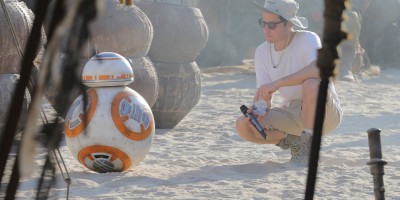
And so I drew a sketch of BB-8 and I had the eye and little antenna and everything and it didn’t have a color pattern and it didn’t have all the critical details that Neal and his team brought in, but I sent that to Neal Scanlan and the began to come up with designs that would sort of follow that. And it was amazing how quickly it looked like it could work, and I didn’t know if they would be able to create something that could be performed on camera, which I knew was going to be important. And they did, and I will never forget the first day that we came to their offices to see BB-8 being performed after we’d agreed on design, etcetera and scale and everything. And we walked in and Brian, the puppeteer, came out and wheeled out BB-8 on his rig. And literally within seconds, Brian disappeared, like he was right there, but it was like he wasn’t there and this thing was looking around and like, and curious and, and you could feel the soul because Brian was imbuing him with life. And Daisy said at one point earlier today, every time we weren’t shooting, we were on a break, and BB-8 was just sort of sitting there and not being performed, it was like heartbreaking because he was this like inert thing and you were like where is he. And then Brian would get him, you’d be like there he is. And it was this very odd and very important thing, but it was a result of Neil Scandlan and his amazing team.
Being here to help relaunch this saga for a new generation of families, and you’re kind of passing the torch to future directors that are going to be exploring this in different offshoots and what not, will you be able to really sit back and enjoy it as a fan now without thinking of what your creative stamp would be as the saga continues?
Well, I will say that I knew getting involved in this project that it was an honor to be asked and I knew that my role would be as temporary guardian of this saga. I knew also as I was working on it that if the movie works, what a great time to step down. And if the movie doesn’t work, who wants me to work on the next one anyway. So it was win-win.
I’m really looking forward to telling original stories that I’ve been sort of wonderfully and happily sidetracked with the movies I’ve been working on, but I do look forward to working on something that doesn’t need to have a number in the title. And I cannot wait to see what the directors who are named and being discussed will do in this universe coming up, because there’s some really talented people that I know are doing extraordinary things. So it’s very exciting, and to get to work with Larry Kasdan to begin what we knew was the start of a trilogy, was a rare thing in a movie, which is to start a story that you know needs to be satisfying, in and of itself, but also is the beginning of a larger tail. So that was really cool to get to do.
How do you find the balance between the preservation of what Star Wars is and integrating the new technology and new things?
It’s a great question. This whole process has been going backwards to go forwards, it’s the next chapter in what happened in 4, 5, and 6. This is 7. It needs to feel like the continuum. But the important thing was recognizing what are the tenants of Star Wars and the things that make Star Wars specifically Star Wars and not one of the many attempts to rip off what George Lucas created.
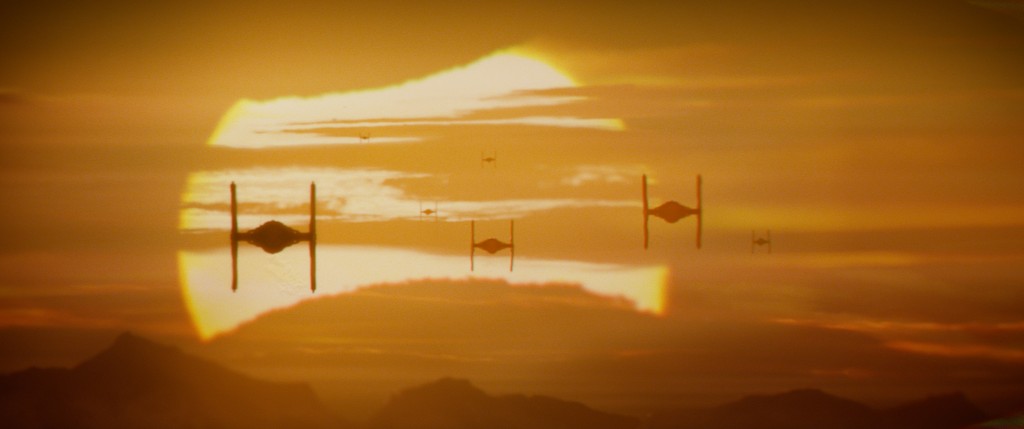
And the beauty of what we had was we actually inherited Star Wars. We could actually put tie fighters and light sabers and star destroyers in our movie and it feel essential as opposed to derivative. But this was all about telling a new story, so the brilliant luck of having Laurence Kasdan along for the ride is, he knew having written Empire and Jedi, having lived with it for decades, about that world and where it might have gone.
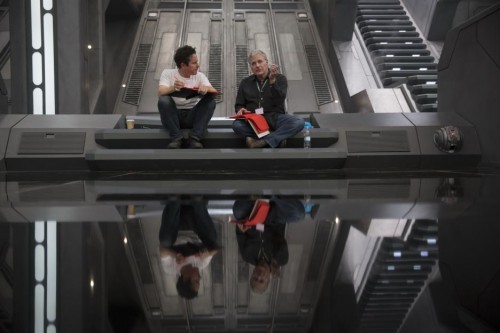
So discussions with him were informed discussions. And the most important thing was always, well, why are we doing this. What’s the point of trying a new Star Wars story? What do we want people to feel? And who are the main characters? And that was the most exciting part is finding this young woman, Rey, this character who from the beginning was a central role and character and voice in the story, to find this character Finn, who we started to fall in love with very early on, and to realize that their story of discovering what their role is in this universe, and not just any universe but the Star Wars universe, that was thrilling.
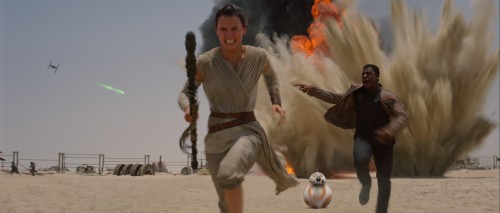
And all of that was happening before we were even really talking about what the original characters were gonna do. And that was why we started getting excited. We realized there was a story that was working, not because it was nostalgic trip and that we were relying on things that came before, but because there was a pulse to the story now, they could use the fabric of what had come before to tell that story. In terms of technology, real quick, we had at our disposal kind of everything, and it was great to be able to like we’re saying use, practical, tangible puppets were necessary, to use CG when, when required, when better.
Finally, you know, I think you’ll see that BB-8 has a slightly better hologram that R2-D2 does. There are things that happen that you go, oh, I see how there have been advancements, but it feels, I think, in testament to the amazing work of the design team, it feels of the DNA of the movies we’ve seen before.
So, I want to thank you for the diverse cast for a new generation. I love the idea that you’ve come up with the first female villain. So, how did that come about?
It was really important when we began working on this script, that this movie feel and look a little bit more like the world than one might have thought. And when I say one might have thought, I don’t know who that one is, but I’m sure that person’s out there because when people say thank you for this, it sort of means that they haven’t seen it like this before on some level. I know that looking at the story from the very beginning, Rey was, and she wasn’t always named Rey, but Rey was always at the center of this story.
We knew Leia was going to be in the movie, from the beginning, of course. This character of Maz Kanata that is played just beautifully by Lupita Nyong’o was always a character and somehow always named Maz Kanata, who was part of this, of this world. Phasma came about because we were trying to figure out the look of the, of Kylo Ren and this amazing design was presented and it was like, we just were floored. It was the coolest thing we’d ever seen.
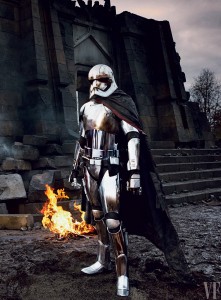
We knew it didn’t make sense for Kylo Ren, but it was really great, and so we, we started coming up with this character that was inspired by this, that was the head of all the Stormtroopers and working on, on that character. And the idea, we knew we wanted to have female Stormtroopers, and there are, in the movie, but we knew we wanted to have the head of the Stormtroopers be an important character, and we thought well why not have her be female. And Gwendoline Christie’s name came up and I was already a fan, but just thought oh, my God. That would be unbelievable if that was possible.
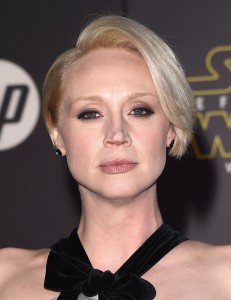
Somehow she was available and, and our British casting director, Nina Gold, also cast Game of Thrones, and so luckily there was a connection there already. And Gwendoline came in and is as lovely as you’d ever want someone to be, and was such a Star Wars fan, and she got exactly what it needed to be instantly and was just a utter joy to work with. So we have good guys and bad guys who are not guys. We have female humans and non-humans.
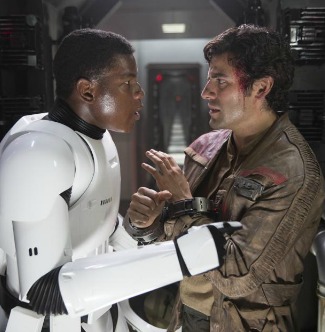
In casting Finn for example, we had no idea what he looked like. We had no idea what Rey would look like. We just started casting knowing you needed to be inclusive. We ended up finding, Daisy Ridley, who was like a prayer answered. And we ended up finding, John Boyega, whose work I was an enormous fan of from Attack The Block. Oscar Isaac, who couldn’t be better, Adam Driver, who was Kathy Kennedy’s idea, the only named ever mentioned for this part. We’d say okay, so who should we cast for Kylo Ren? She’s like how about Adam Driver? I’m grateful to Judd Apatow and Leena Dunham, who actually had to do a crazy, sort of sneaky work to get him available to us, because they had him as first position on their show, Girls, and contorted things somehow to allow him to be in this movie. So I’m enormously grateful to them.
But anyway, I will tell you that the experience of working on this movie, really has been nothing sort of shocking to me, because it kept living up to it’s potential in a way that didn’t really feel like it would. I kept waiting for the other shoe to drop, and it’s never too late, I guess, for that to happen, but regardless of what the reception is or what the result of the movie is, I know for a fact that when you see the movie, you will be seeing truly extraordinary work by thousands of people. And it is something I will be grateful for forever. And to you guys for being here today, and staying so late, so thank you so much.
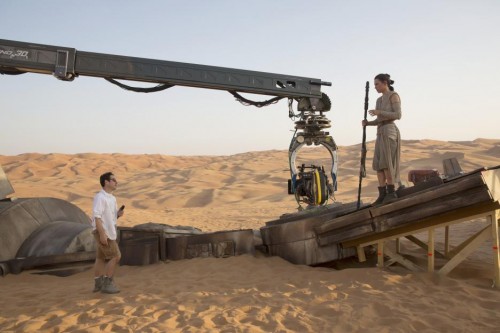
It was a very long day for us, and especially for J.J. Abrams. He gave us his time, answered all of our questions. When you have someone of that caliber that gives you their time, when they really didn’t have to, it says a lot about their character.
It’s hard to believe I am wrapping up my coverage of the #StarWarsEvent with this being my last post covering my interviews. It was truly one of the most memorable experiences I’ve had in all my Disney Entertainment adventures. I don’t know how to stress that how much I loved Star Wars: The Force Awakens. I appreciate all the thought and love that went into making Episode VII. J.J., Katherine, Daisy, John, Lupita, Oscar and the rest of the team – Congratulations. I feel so honored to have had this opportunity to be part of something so HUGE!
Follow STAR WARS on: Facebook * Twitter * Instagram * YouTube
Visit the official STAR WARS: THE FORCE AWAKENS website!
STAR WARS: THE FORCE AWAKENS is now playing everywhere!
*I attended the press event to cover the #StarWarsEvent and then received an invitation to screen Star Wars: The Force Awakens to share my thoughts with my readers. If it’s not obvious in my writing, please know, all opinions are always my own.
- You Have to Remember – 9/11, 20 Years Later - September 11, 2021
- Creating the Perfect Look with a Maxi Dress - October 20, 2020
- Brand Better Giveaway - October 6, 2020


Leave a Reply